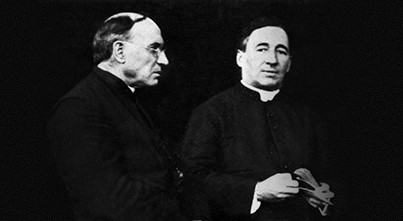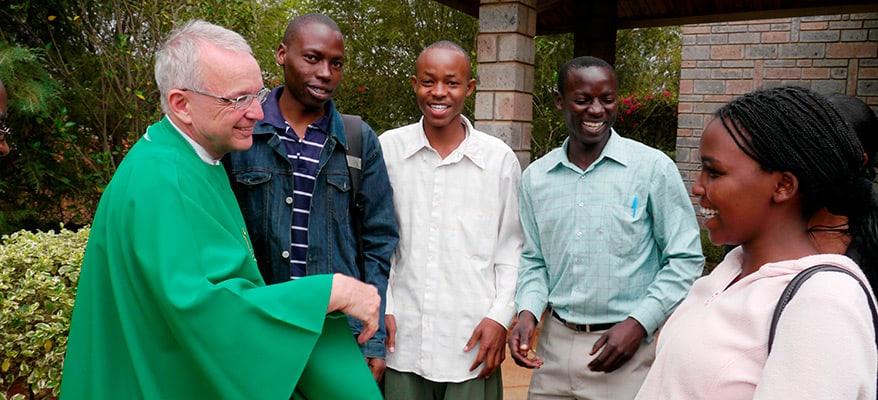Today, as the Church celebrates Trinity Sunday, we are invited to reflect upon a great truth of the Christian faith: we believe in a Trinitarian God: one God in three persons. God is Father, Son, and Holy Spirit, living a life of communion and perfect mutual love.
We can look to the Gospel of John the Evangelist to hear what Jesus says about the Trinity. “No one can come to the Father, except through me. If you know me, you know my Father” (14:6-7). “You must believe me when I say that I am in the Father and the Father is in me” (14:11). “I shall ask the Father, and he will give you another Advocate to be with you forever, the Spirit of truth” (14:16-17). “The Advocate, the Holy Spirit, whom the Father will send in my name, will teach you everything and remind you of all I have said to you” (14:26). “When the Advocate comes, whom I shall send to you from the Father, the Spirit of truth who issues from the Father, he will be my witness. And you too will be witnesses” (15:26-27).
Throughout history the Church has consistently affirmed and proclaimed its belief in the Trinity. Yes, it is a profound mystery of our faith. This doctrine leads us to the profound truth that our God is fundamentally a communion of love. Again, turning to Saint John, we hear: “God is love, and anyone who lives in love lives in God, and God lives in him” (1Jn 4:16). “We can know that we are living in him and he is living in us, because he lets us share his Spirit” (1Jn 4:13).
You may ask: How does one come to know our Trinitarian God of love? The answer is actually quite simple: live in love. A person who loves others for the joy of loving is a reflection of the Trinity. A family in which each person respects and helps the others reflects Trinitarian love. A parish in which people love and share their spiritual and material gifts is also a reflection of the Trinity. In fact, Vatican Council II, quoting Saint Cyprian, asserted: “The Church is seen as ‘a people made one with the unity of the Father, the Son, and the Holy Spirit’” (LG 4).
Various writers have given us analogies and illustrations of the Trinity, although all have limitations. Jacqueline (an internet source) tries to illustrate the Trinity for children, noting that the Trinity is like an egg (having shell, white, and yoke); like an apple (it has skin, flesh, and seeds); like water (liquid, solid [ice], and steam); like a shamrock (three-leaved clover). Such images engage our mind and imagination.
Finally, I can even see myself as a “Trinitarian missionary,” combining my native American culture with values and insights from the cultures of the Philippines and Bangladesh where I have served in mission. Whatever images may attract us, let us celebrate God’s great love given to us through the three persons of our Trinitarian God.
James H. Kroeger, M.M.
Pentecost Prayer
We bow before you
O most sacred mystery:
so pure, so holy, so powerful
is the love of the Father for the Son
and the Son for the Father
that you generate the Holy Spirit
eternally.
O Triune God, you dwell in a loving
community of blessed relationships.
You who created us in your image
and became one of us in Christ
and fill us with your Holy Spirit
call us to live your divine life
of love with one another.
A mystery to be lived
a mystery to be worshiped
a mystery to be loved
all the days of our life
till at length you draw each of us
to yourself and become one with you.
Hear, O Israel, the Lord is One
God in Three Divine Persons:
Father, Son and Holy Spirit.
May we live your mystery here on earth
till that endless day when we join
with all the angels and saints in saying:
“Holy, Holy, Holy!”
By Fr. Joseph Veneroso. M.M.




